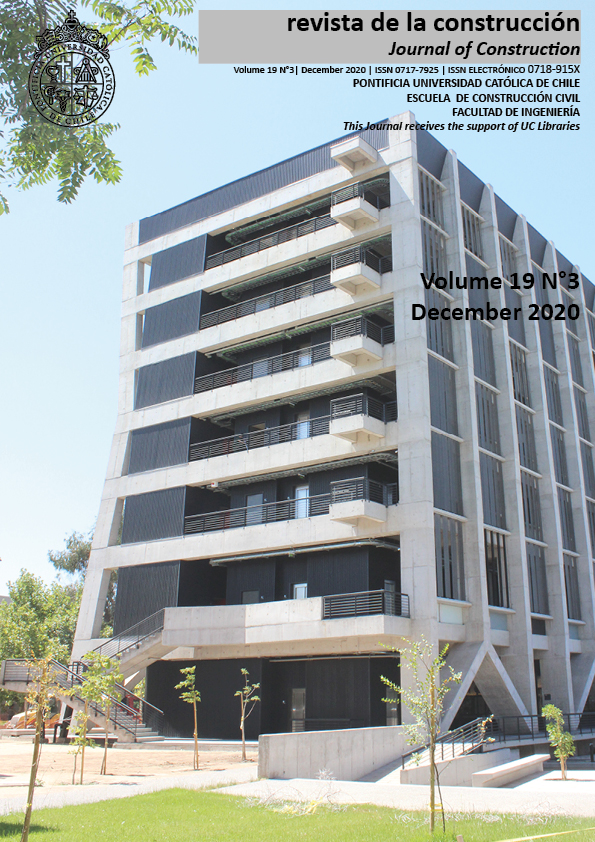Evaluating the durability of recycled concrete made of coarse recycled aggregate concrete containing silica-fume and natural zeolite
DOI:
https://doi.org/10.7764/rdlc.19.3.457-473Keywords:
recycled concrete, recycled aggregate, durability, silica-fume, natural zeoliteAbstract
This experimental study evaluates the durability of recycled aggregate concrete (RAC) containing silica-fume (SF) and natural zeolite (NZ). For this purpose, four levels of recycled coarse concrete aggregates (RCA) were replaced with natural coarse aggregates (NCA). To compare the effect of pozzolans, three levels of SF (5%, 10%, and 15%) and three levels of NZ (10%, 20%, and 30%) were replaced with cement. To evaluate the durability of RAC, 28 mixed designs were made and the following were measured: compressive strength (CS), water absorption by immersion (WA by immersion), water absorption by capillary (WA by capillary), electrical resistance (ER), electrical conductivity (EC) and rapid chloride penetration test (RCPT). The results indicated that WA by immersion and WA by capillary of RAC increased with enhanced RCA incorporation. On the other hand, the pozzolanic reaction of 10% of SF and 10% of NZ decreased capillary pores and structural weakness of full-scale RAC. However, due to the internal chemical changes of RAC, contrary to the WA by immersion and WA by capillary, compared to conventional concrete (CC), a lower EC and unchanged ER values of RC100 containing pozzolans were seen. The scanning electron microscopy (SEM) revealed that compared to NZ, a 10% of SF significantly improved the microstructure of full scale RAC.





